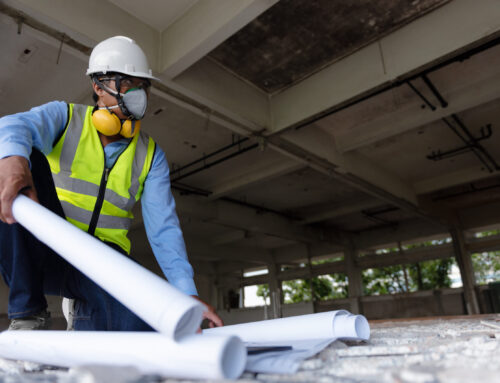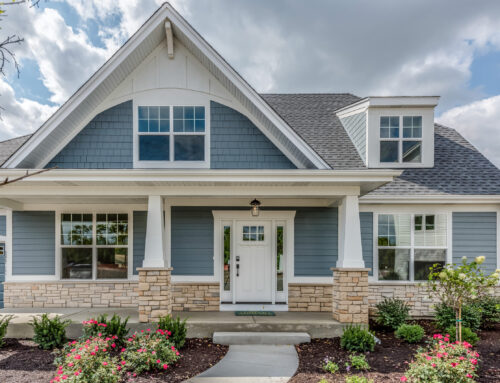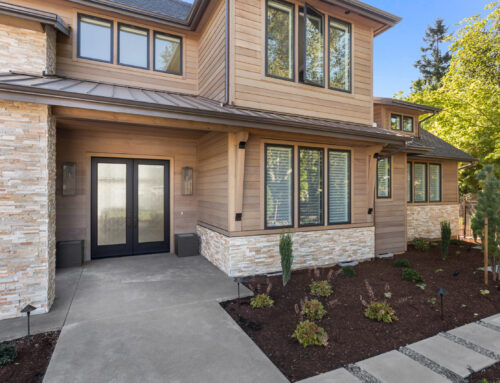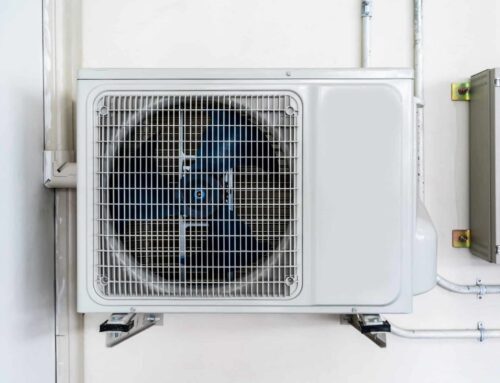Some roof materials are built by design to stand up to harsh temperatures, dry conditions, and overbearing UV rays all year round without sacrificing ventilation and airflow through your attic and the rest of your home. Here are some of the most common and effective materials for a roof in a hot climate.
Lighter Colors
Asphalt tends to be the most common material used in a shingle roof, but the concentration and density of asphalt shingles in urban centers result in a mass absorption of heat, making for higher temperatures than in surrounding areas. This is known as the heat island effect.
This effect is mostly caused by the asphalt itself as well as its dark colors. Darker colors are more prone to absorbing heat from UV radiation, while light-colored roofs reflect sunlight away. Painting your roof a lighter color may reduce the heat island effect and help you save on your energy bills. However, not all roof materials can be painted or dyed.
Metal Roofs
Metal is the go-to trendy material in most warmer climates these days. Versatile and durable, metal roofing has seen a spike in usage thanks to its generally sustainable nature. Most aluminum, steel, and copper roofing are made from recycled materials. Compared to other roofing materials, metal takes longer to heat up, holds less heat, and cools faster at night. Most metal roofs that get installed also feature a conspicuous bit of space between the decking and the actual metal panels. That space essentially acts as a buffer or barrier that can prevent heat from traveling from the roof to the actual living area below.
Metal roofing does tend to cost a little more than other forms of roofing, though the durability and general lack of maintenance can help to balance out the upfront costs. Most types of metal must be treated to prevent rusting and corrosion. Each panel also has to meet minimum standards for wind resistance. The installation also plays an important role. While metal roof panels can be installed at an angle, the roofer has to consider glare and adjust for slope. Otherwise, the metal panels will keep you warm, but they may shine the sun into your neighbors’ homes or into the eyes of passing drivers.
Terra-Cotta Tiles
A common residential roofing material in Spain, Italy, Mexico, the American Southwest, and other regions well known for high heat and plentiful sunshine, terra-cotta traditionally comprises a baked clay. The baking process is part of what contributes to terra-cotta’s resistance to hot climates. Baking these tiles in kilns creates a material that is durable and less porous, which prevents heat from getting trapped within the terra-cotta.
Terra-cotta tile roofs are highly durable with some ancient buildings featuring the same tiles for centuries, but even modern terra-cotta tiles should last about 50 years on average.
While the material plays an important role in terra-cotta’s heat resistance, the actual shape and design also help to support its overall effect. Terra-cotta tiles are typically molded in a half-barrel shape or S curve. When the tiles are laid on the roof, they interlock to form arches. These arches allow for greater air and water circulation and reduce the amount of heat that gets trapped in the roof.
The main drawback of terra-cotta tiles is the weight. These tiles can weigh up to four times as much as common asphalt or composite shingles. That means that they need a solid foundation that can carry that extra weight, which may require adding extra structural reinforcements to your home. If you do live in an area that experiences cold, wet weather, terra-cotta tiles may potentially snap and break.
The durability and style of terra-cotta also means that these tiles usually come at a higher price. However, it may be worth it to invest in that slightly higher price as it may mean greater energy savings in the long run.
Concrete Tile
A slightly more affordable option than terra-cotta, concrete tiles are built thick, meaning it takes longer for the sun to heat through a slab of concrete and reach your home. Similar to terra-cotta, concrete tiles can also be formed into half-barrels or S shapes, allowing for greater air ventilation. Dying the concrete a lighter color can also help to prevent heat absorption. Concrete can be heavy though, meaning you may need to spend extra on foundational support in your roof, and without painting or dying the concrete tiles, your roof design may not be the most aesthetically to look at.
EPDM
Short for ethylene propylene diene monomer, EPDM is a synthetic rubber-like material. Commonly used in commercial roofing, EPDM comprises a strong thermoplastic that is effectively resistant to weather, UV radiation, and general wear. Optional roof coatings with titanium dioxide can improve the heat reduction potential by reflecting heat and sunlight. As EPDM is generally seamless, it can also help as a barrier against water and air leaks.
Unlike the previous two options, EPDM is also lightweight and malleable, allowing for easy installation. However, EPDM is not nearly as durable. While EPDM can withstand most weather, it can be easily damaged by fallen branches, rocks, and other debris.
Green Roofs
Green or living roofs consist of roofs covered in plants and moss suspended over a protective, waterproof membrane (usually EPDM). The membrane is filled with soil and propagated with a variety of local plant life. The soil’s naturally cool temperature and the plant’s growing process keep the home cool by preventing heat absorption. During the colder months, a green roof also acts as an effective form of insulation to prevent heat loss. Water runoff from the plants can also help to cool the building, and the plants naturally act as a radiant barrier for the roof foundation, increasing the roof’s longevity.
Best of all, green roofs are considered energy-efficient and naturally reduce the heat island effect. They also add oxygen back into the air, making them particularly important for large urban sprawls and areas that experience high traffic congestion.
However, green roofs require good planning, expertise, and vision. Green roofs can be installed on traditional roofs such as a gable or hip roof, so that homeowners can take advantage of the many benefits they can offer. You may also have to spend more to maintain the roof, from providing it with regular water to getting rid of weeds to repelling any potential pests.
Choosing the best roof material for hot climates comes with a lot of decisions. Consider the price upfront along with the potential price for roof maintenance, repairs, and replacement. Ultimately, spending a little more now can help you save on future repairs while reducing your utility costs.
Call us:
At BP Builders we know about roof repairs.
We also know when to replace a roof.
Ask for our advice.
Call us today for all your roofing needs.





